How They Make Tofu
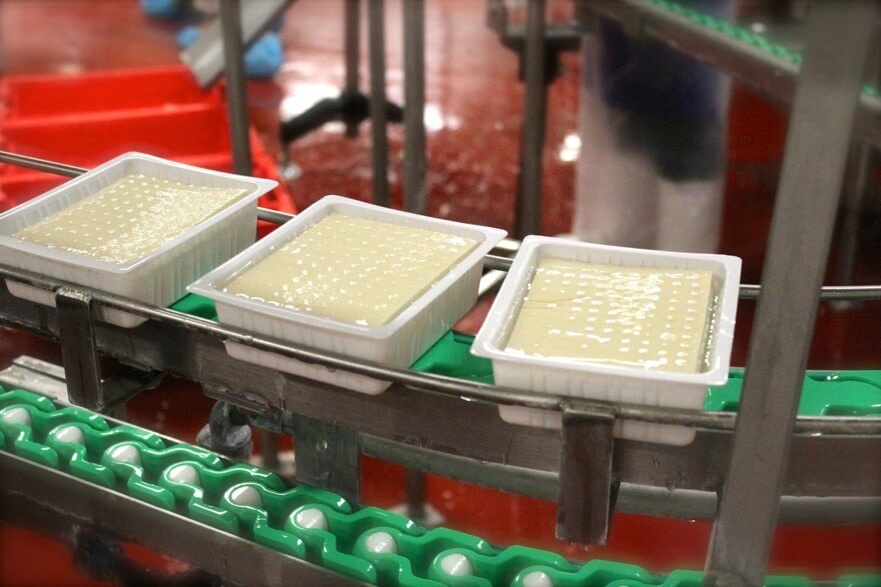
Learn how tofu is made in Sharon Palmer’s field trip to a tofu manufacturer in Southern California, where she shows you step-by-step how this versatile plant food is created.
Have you ever wondered how tofu is made? If you’re a plant-based eater, like me, it’s a regular part of your diet. But tofu is nothing new—this is a food that’s been celebrated in Asia for centuries. So, it was really great that Sharon Palmer and I had the unique opportunity to visit House Foods in Garden Grove, California for a private tour of their tofu-making factory. From start to finish, the entire tofu-making process takes only 14-15 hours.
It starts with real, pure GMO-free soy beans (House Foods has an organic line and a conventional line). House Foods produces 180,000 packages per day in their California factory, utilizing nearly 32 tons of soybeans! This is actually a minimally processed plant food, which can add extra flavor, nutrition, and diverse textures to breakfast, lunch, dinner and dessert. It’s also rich in protein, containing all nine of the essential amino acids humans require, making it a satisfying, nutritious alternative to meat or eggs in almost any recipe.
Let’s see how tofu is made at House Foods, step by step.
1. Quality Control. The first step in the tofu making process is confirming that there are no genetically modified organisms (GMOs) present in the batch. The House Foods Quality Control Department does this for each batch of soybeans received. If GMO’s are found, the entire batch is rejected. (Side note: All beans used in tofu making at House Foods are grown in the United States!)
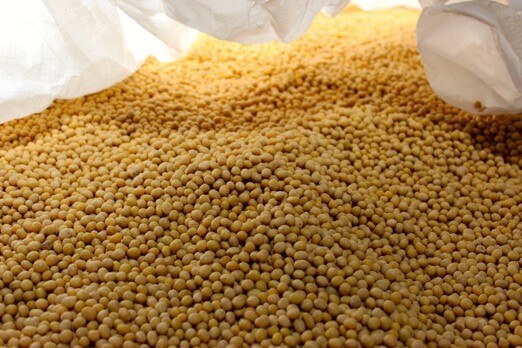
2. A Long Soak. The soybeans are then weighed and soaked in water for 10 hours in a large cylindrical tank. This softens and plumps them and makes it much easier to effectively mash them up.
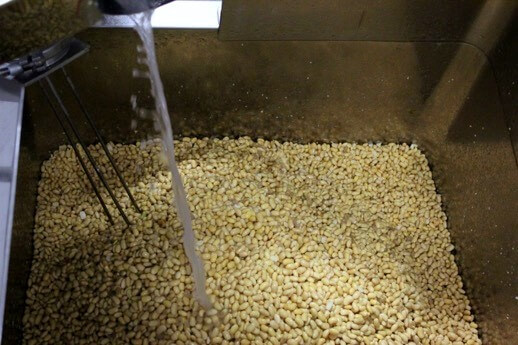
3. Mashing and Separation. After soaking and rinsing, the soybeans are ground into a slurry, which allows the natural proteins in the soybean to be released for better extraction, and then heated. The slurry is then filtered, separating the fresh soymilk from the okara (Japanese for soy pulp). The pulp is not utilized in the final product, but is later sold as animal feed. This grinding, heating, and filtration process takes about 30 minutes to complete and the result is a super smooth and fresh soymilk that you could drink, if you wanted to.

4. Coagulation. Calcium sulfate (or other coagulants) is then added to the soymilk. These aid in the transformation of the milk, changing it from a thin liquid to a thickened mass. After about 30 minutes, large curds form. This process is very similar to the making of cheese from dairy milk. It’s also what can give tofu a boost of calcium.
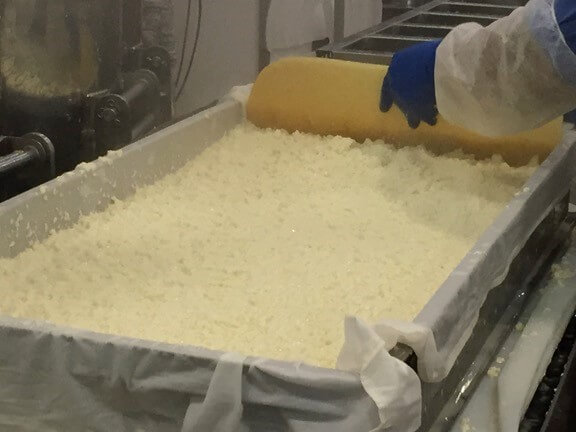
5. Formation and Draining. The curds are then loosened, broken apart and formed in a large cloth-lined box. The resulting box of tofu curd is then pressed, based on desired firmness, and drained of excess moisture. Extra firm and firm tofu varieties are pressed much longer than medium firm. Silken/soft tofu is actually made by coagulating soymilk without being pressed.

6. Cutting and Packaging. It is now ready to be cut and packaged. The large box of tofu is cut into exact rectangles, which are then packaged in water and thermally sealed.

7. Double Cooling Pasteurization. The double cooling pasteurization process is unique to House Foods. The packaged tofu is continuously heated and then quickly cooled, which ensures that the product is safe with a long shelf life.
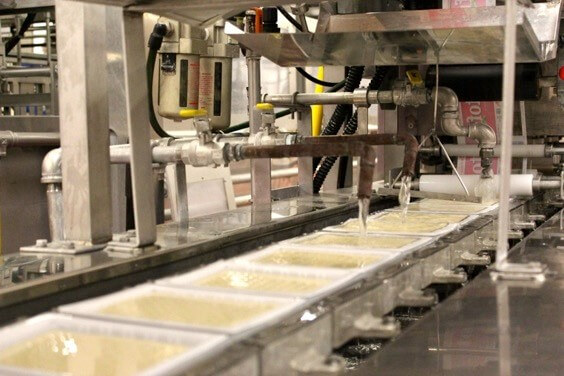

When the tour concluded the House Foods team sent us home with many packages of tofu and shirataki; I’ve been enjoying both for weeks! A heartfelt thank you to House Foods for allowing us an inside look at the world of fresh tofu. If you’re hungry for fresh recipes that incorporate tofu, check out a few of Sharon’s ideas below (along with some news updates about soy!)
Scrambled Turmeric Tofu with Mushrooms and Greens
Savory Steel Cut Oats with Spinach, Mushrooms and Tofu
Tofu Kale Power Bowl with Tahini Dressing
How to Make Vegan Sour Cream
News on Soy Health Claim
EU Says Soy is Safe
House Foods Organic & Premium Tofu and Shirataki
House Foods Organic tofu comes in four different levels of firmness in varying sizes: soft, medium firm, firm, and extra firm. The chart below illustrates the proper applications and types of recipes. House Foods also offers a super firm variety that comes pre-grilled or pre-cubed so you can highlight it in a wrap or salad with little to no prep work. Other products included firm and extra firm organic tofu fortified with DHA Omega 3 and vacuum packed tofu cutlets in teriyaki, spicy garlic, Asian BBQ, and plain. These cutlets require no draining or cooking and can be eaten immediately! Traditional shirataki is a calorie-free white yam noodle substitute that is gluten and soy-free. It can be used in all recipes that call for noodles or pasta. House Foods also produces a tofu shirataki product that has 10 calories, 3g carbohydrates and 2g of fiber per serving. These noodles come in spaghetti, fettuccine, angel hair and macaroni shapes for use in all kinds of hot and cold dishes. The chart below illustrates the differences between the three House Foods shirataki noodle products.
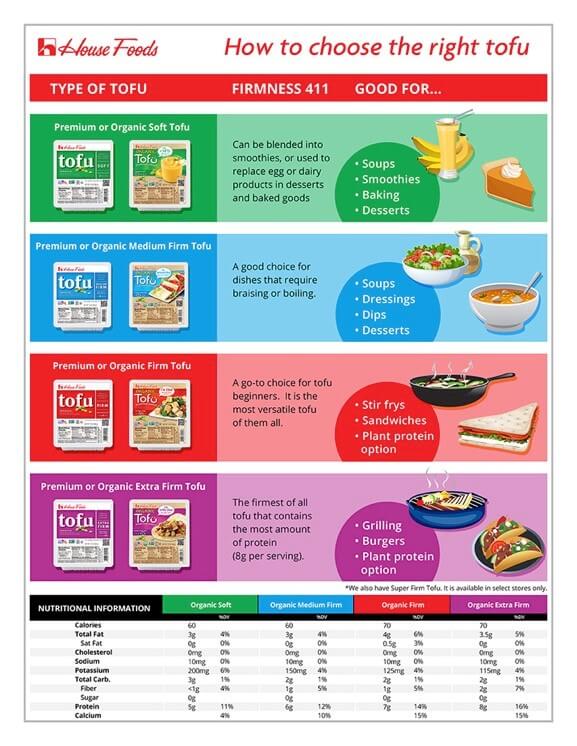
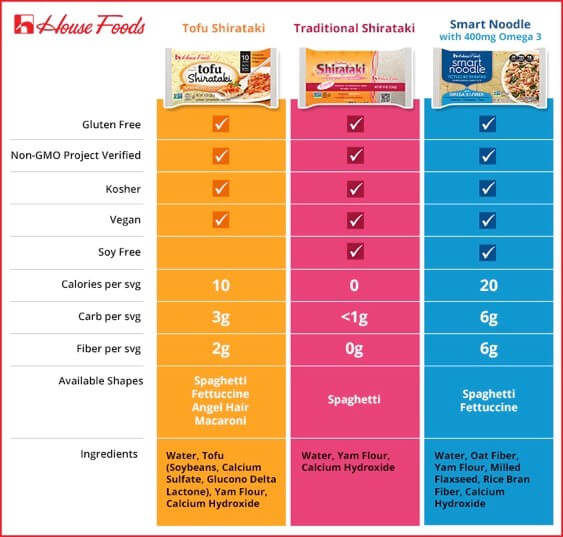
Written by Rebecca Berg, Dietetic Intern with Sharon Palmer, MSFS, RDN
This blog post is not sponsored.


